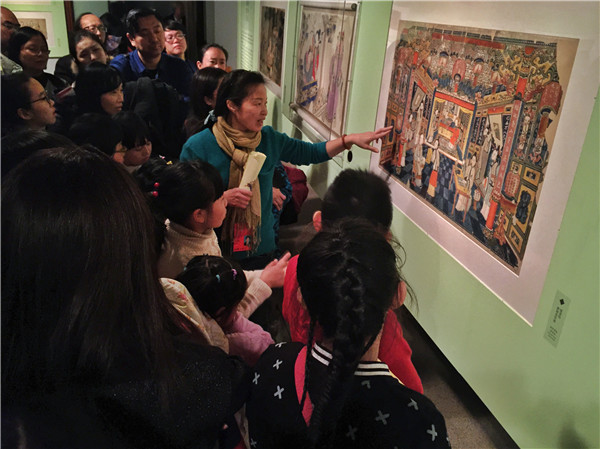 |
|
An ongoing exhibition about nianhua, the traditional Chinese New Year paintings, shows 140 vintage pieces that were produced in Tianjin's Yangliuqing town and reviews various subjects and styles that prompted Yangliuqing to become a nianhua-production center. [Photo by Jiang Dong/China Daily] |
But Bo says: "Older painters still followed some rules that had been passed down since the Song Dynasty.
"For example, in the paintings a woman's shoulder would not be highlighted so that she looked slender, and a Buddhist figure would be portrayed elegantly. Also, when fairies were portrayed, only a few colors were used."
Wu says that paintings done during the reigns of the Qing emperors Kangxi and Qianlong have a simple composition because painters then paid a lot of attention to facial expressions.
He adds, however, that during the reigns of later emperors, painters had more figures in a scene and the colors and compositions were more diverse.
Also, besides children, nianhua painters also painted a lot of menshen, or door gods who people believed would fight evil spirits and bad luck.
The nianhua works also touched on educational themes.
So, when a lot of people fell victim to opium addiction in the 1880s, some studios did works that urged people to quit drinking, gambling and opium.
If you go
9 am-5 pm, closed on Mondays, through March 26. 1 Wusi Dajie, Dongcheng district, Beijing. 010-6400-1476.